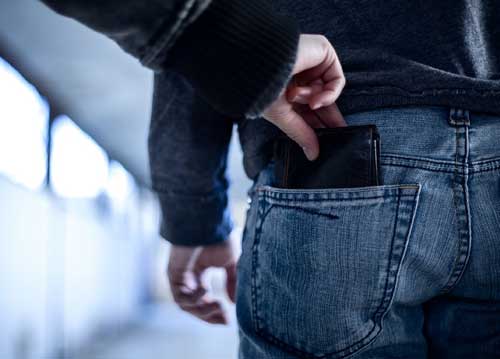One morning, Gary Z. became one of the millions of people who have had their bank account compromised. Money was missing and there was evidence Gary’s debit card was used without his knowledge. There are countless ways that someone can take your hard-earned cash or ruin your credit. Computer viruses, skimmers at point-of-sale systems, and even the old ATM card cloner are methods in use today.
And Gary can’t say with 100% certainty, but he believes an electronic skimmer stole his information. Whoever stole his card used it to make many small, contactless purchases.
They held his card near the point of sale machine and only made purchases around $20. But, these $20 purchases added up before Gary realized what was happening.
So, what exactly is contactless payment? Contactless payment systems use cards, key fobs, or other devices to make payments. They use radio-frequency identification or near field communication to transmit information.
Contactless payment first arrived in the 1990s and is now having its moment. In fact, the use of contactless payments in the U.S. has increased 150% since March 2019.
Consumers are minimizing what they carry, which means less cash on hand. People are conducting more of their business with their phone. And especially these days, everyone is looking for a way to conduct business without physical interaction. But, the shift to contactless payments opens consumers to new risks. Contactless payment is convenient, but like any technology, it comes with privacy risks.
For example, a smartphone is one of the easiest ways to make a payment. But without the proper security features it can be risky. Many contactless transactions happen without a receipt. This makes it difficult for the owner to prove the charges were fraudulent. Contactless credit cards use radio frequency identification (RFID) to send the data. But, hackers have been successful in making fake scanners to steal data. And, if a hacker gets the information from the card, they can create cloned cards. Mobile wallets, like the iPhone, rely on near-field communication (NFC) to transmits data.
It remains one of the most secure ways to conduct financial transactions. But, you can reduce the odds of becoming a victim of contactless fraud even further by following these steps:
Electronic pickpockets: Never keep your cards in accessible pockets, which can draw the attention of thieves. Remember they don’t even need to take your card to steal from you.
If a criminal changes the software on a credit card reader they can use it to steal your card information. All they need to do is be close enough for the signal from your card to reach the sale machine. You should carry a RFID blocking card in your wallet to block the transmission to a skimming device.
Never let it out of sight: Don’t let anyone take your card or phone out of sight while taking a payment, even for a few seconds. (Restaurants can bring a card reader to you and charge the card in front of you.) Not only could a corrupt employee write down your card numbers… But, a thief could be using a skimming device to copy data from your card or smartphone.Also, don’t give your friends or family your card or phone to make payments. Always be present for all transactions so you won’t have to wonder if you actually made the purchase. Check your records: Always ask for a receipt to make sure you were charged the correct amount.
With contactless payment you don’t have to enter a PIN at the store or sign a receipt so the employee could tell you the wrong amount. Keep a close eye on bank statements and your credit statement to look for any unusual activity. Thieves usually make small purchases when they steal contactless numbers. This is because the smaller amounts won’t draw the attention of the bank. Bottom line, keep an eye on your records. The use of contactless payments will only increase in the coming months. So, tackling security concerns now can save you from potential loss of money down the road. (This is another reason I still love to use cash, as “old fashioned” as this is.)







